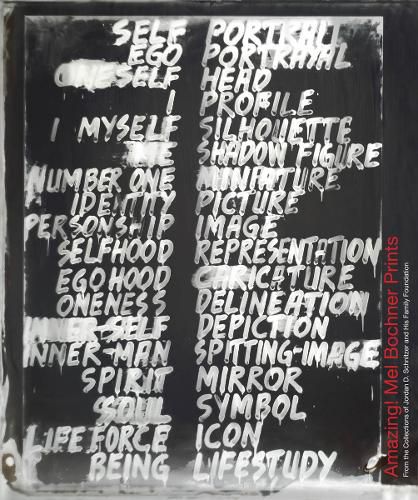Readings Newsletter
Become a Readings Member to make your shopping experience even easier.
Sign in or sign up for free!
You’re not far away from qualifying for FREE standard shipping within Australia
You’ve qualified for FREE standard shipping within Australia
The cart is loading…






A New York Times Book Review 2019 holiday gift guide pick One of Time Magazine’s best photo book of 2019
For more than 50 years, American conceptualist Mel Bochner (born 1940) has been shaping dialogs between art and language through exhibition concepts, paintings and sculptures that embrace systems and structures to reveal their cracks and limitations, undermining the means we use to comprehend the world. Bochner created his first prints in 1973 at the invitation of publisher Robert Feldman of Parasol Press (who introduced a generation of minimalist and conceptual artists to printmaking through his work at Crown Point Press). Since then, Bochner has employed many different forms of printmaking, using and abusing its material possibilities and its unpredictability to counter the methodical fashion in which plates and stencils are cut, characters per line are fixed, or print runs set. This volume surveys Bochner’s longstanding engagement with various types of printmaking, from aquatints to monoprints.
$9.00 standard shipping within Australia
FREE standard shipping within Australia for orders over $100.00
Express & International shipping calculated at checkout
A New York Times Book Review 2019 holiday gift guide pick One of Time Magazine’s best photo book of 2019
For more than 50 years, American conceptualist Mel Bochner (born 1940) has been shaping dialogs between art and language through exhibition concepts, paintings and sculptures that embrace systems and structures to reveal their cracks and limitations, undermining the means we use to comprehend the world. Bochner created his first prints in 1973 at the invitation of publisher Robert Feldman of Parasol Press (who introduced a generation of minimalist and conceptual artists to printmaking through his work at Crown Point Press). Since then, Bochner has employed many different forms of printmaking, using and abusing its material possibilities and its unpredictability to counter the methodical fashion in which plates and stencils are cut, characters per line are fixed, or print runs set. This volume surveys Bochner’s longstanding engagement with various types of printmaking, from aquatints to monoprints.